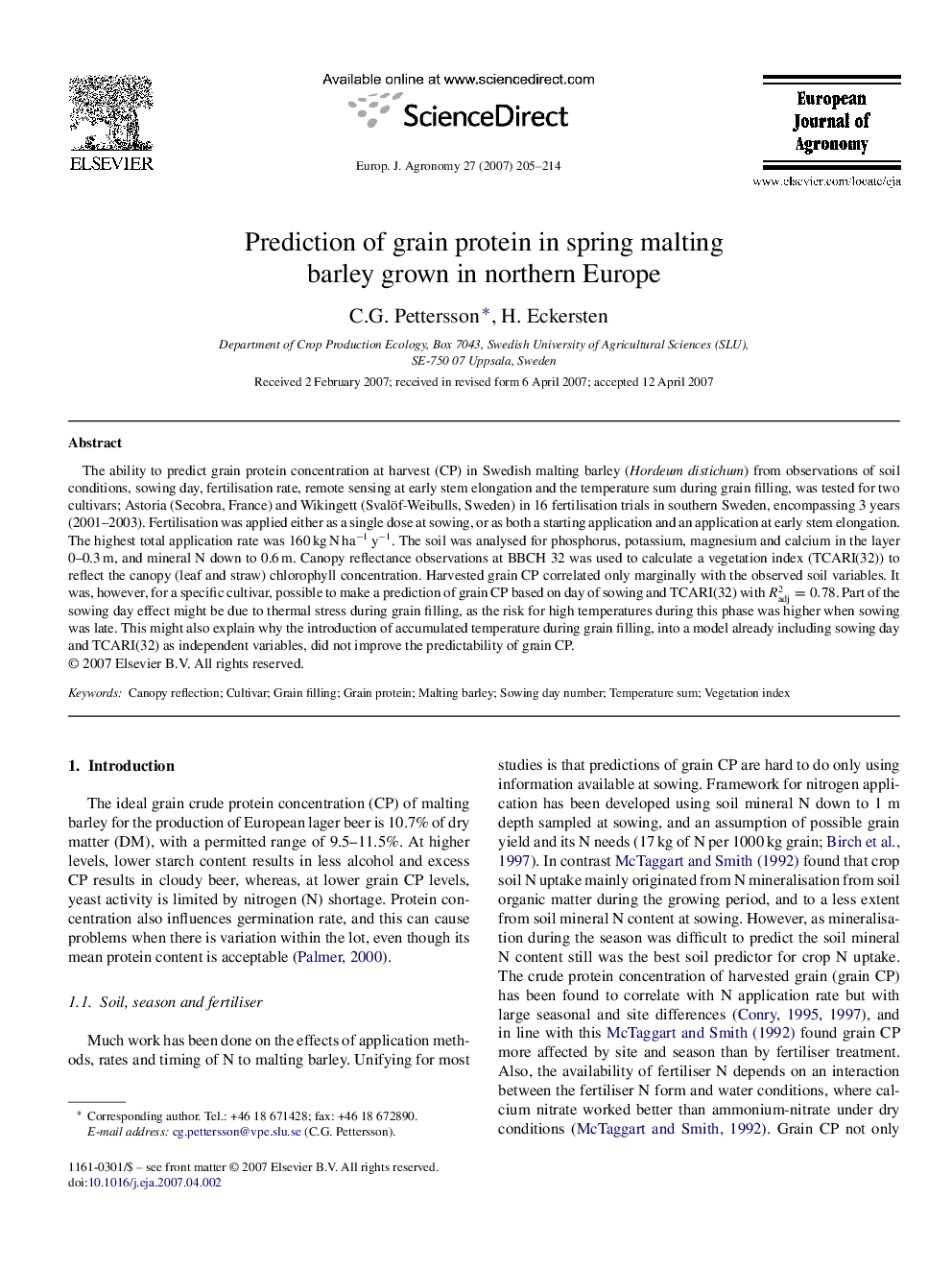| Article ID | Journal | Published Year | Pages | File Type |
|---|---|---|---|---|
| 4509565 | European Journal of Agronomy | 2007 | 10 Pages |
The ability to predict grain protein concentration at harvest (CP) in Swedish malting barley (Hordeum distichum) from observations of soil conditions, sowing day, fertilisation rate, remote sensing at early stem elongation and the temperature sum during grain filling, was tested for two cultivars; Astoria (Secobra, France) and Wikingett (Svalöf-Weibulls, Sweden) in 16 fertilisation trials in southern Sweden, encompassing 3 years (2001–2003). Fertilisation was applied either as a single dose at sowing, or as both a starting application and an application at early stem elongation. The highest total application rate was 160 kg N ha−1 y−1. The soil was analysed for phosphorus, potassium, magnesium and calcium in the layer 0–0.3 m, and mineral N down to 0.6 m. Canopy reflectance observations at BBCH 32 was used to calculate a vegetation index (TCARI(32)) to reflect the canopy (leaf and straw) chlorophyll concentration. Harvested grain CP correlated only marginally with the observed soil variables. It was, however, for a specific cultivar, possible to make a prediction of grain CP based on day of sowing and TCARI(32) with Radj2=0.78. Part of the sowing day effect might be due to thermal stress during grain filling, as the risk for high temperatures during this phase was higher when sowing was late. This might also explain why the introduction of accumulated temperature during grain filling, into a model already including sowing day and TCARI(32) as independent variables, did not improve the predictability of grain CP.
